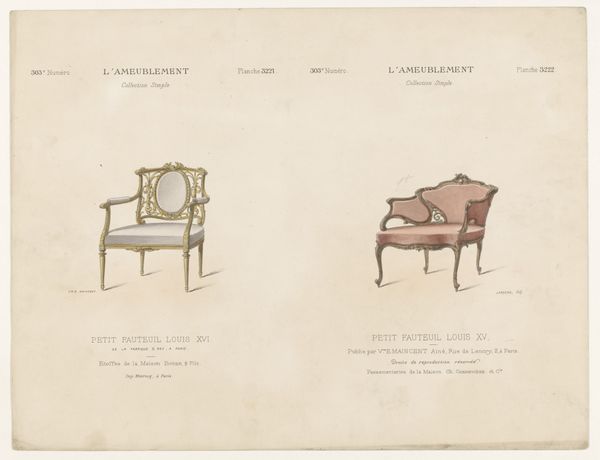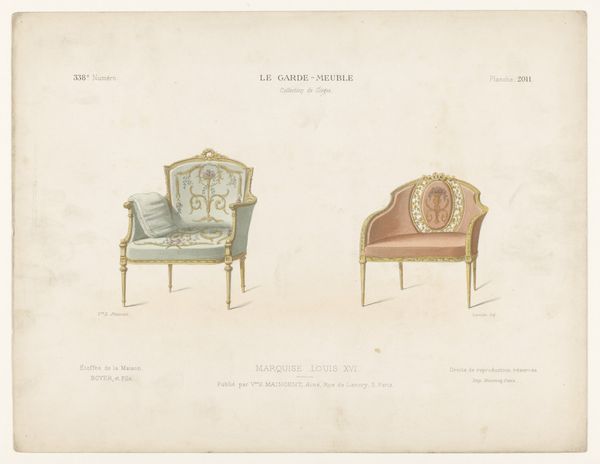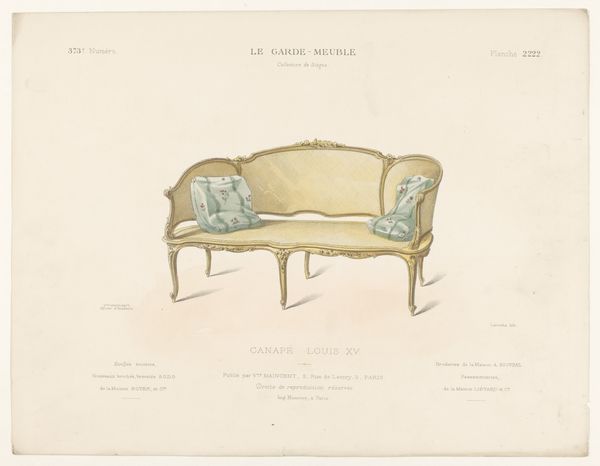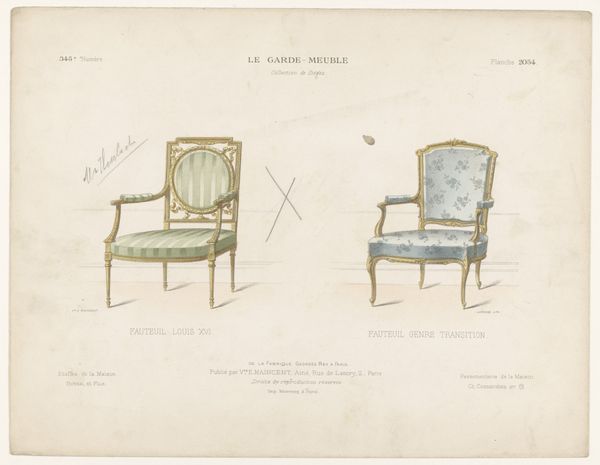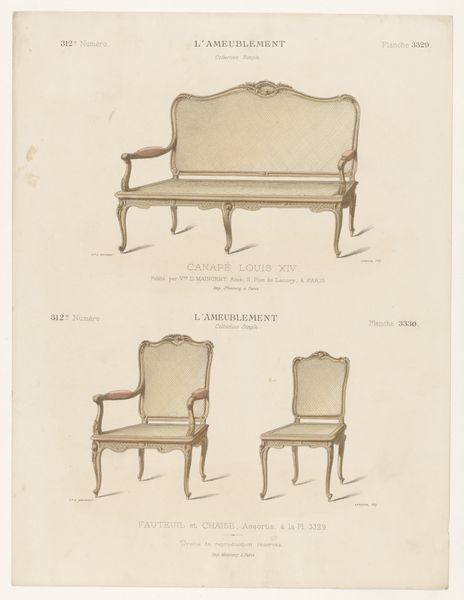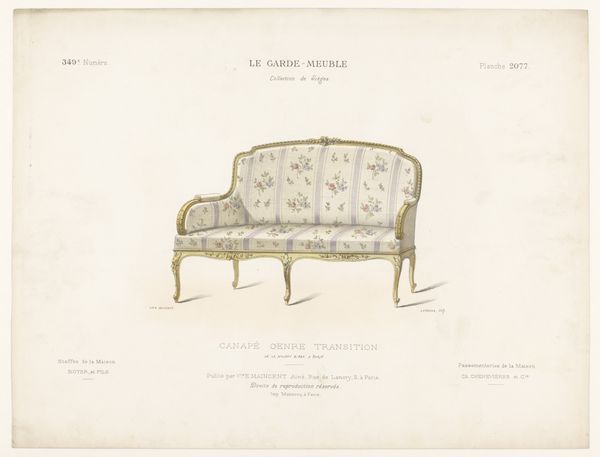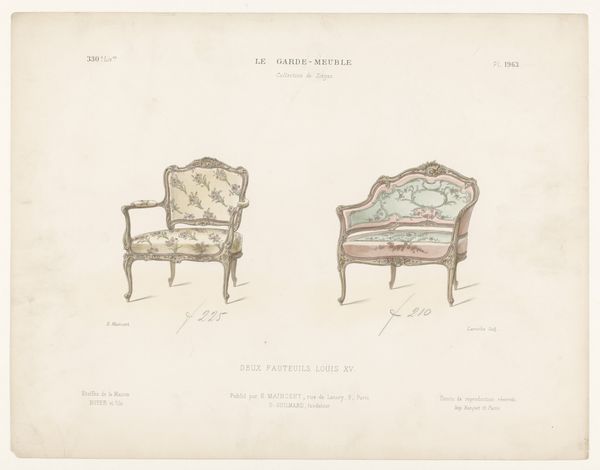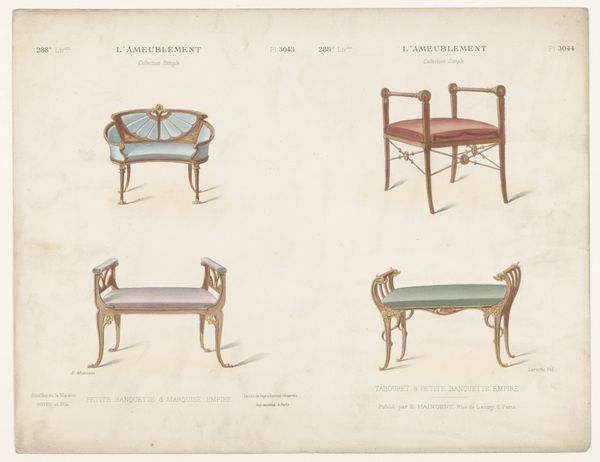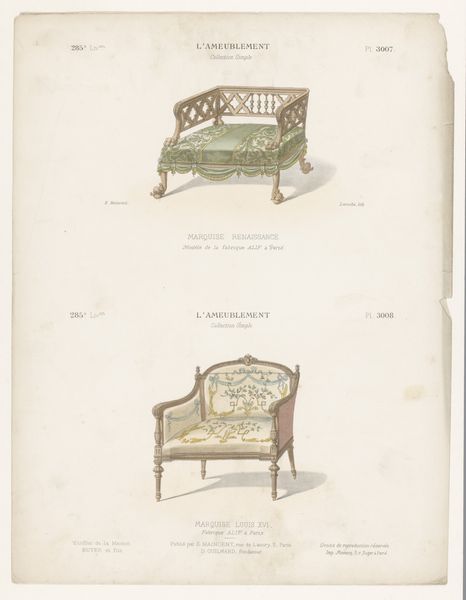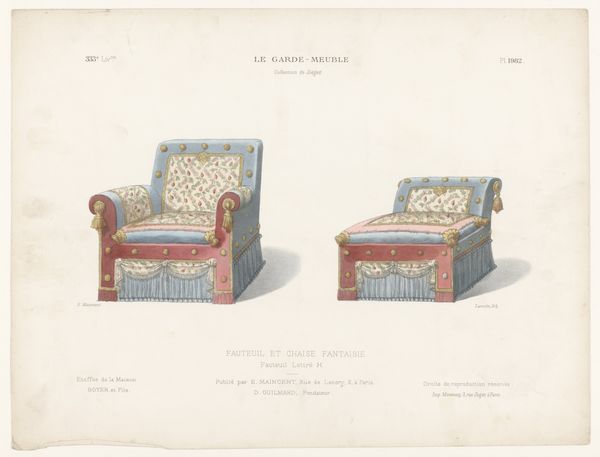
#
aged paper
#
light pencil work
#
photo restoration
#
light coloured
#
colourisation
#
old engraving style
#
retro 'vintage design
#
archive photography
#
personal sketchbook
#
watercolour illustration
Dimensions: height 278 mm, width 357 mm
Copyright: Rijks Museum: Open Domain
Curator: We're looking at a lithograph entitled "Twee fauteuils," dating back to 1895, by Léon Laroche. Editor: My first thought is how delicate it is. The colours are so pale, almost spectral. And such a technical illustration—almost scientific in its precision. Curator: Absolutely. Laroche meticulously renders these two armchairs, showcasing different styles, one Louis XVI and the other Empire. The structure is paramount; note how the line work defines the forms, emphasizing the neoclassical elements like the symmetry and the carefully considered proportions. Editor: I am intrigued by the craftsmanship that these chairs allude to. Think about the workshops where these chairs were produced, the apprentices learning their trade, the specific tools required. Each chair is more than an object. It is a culmination of human skill and manual labor that provides material comfort. Curator: Indeed, but within the composition itself, observe how Laroche contrasts the curving lines of the Louis XVI chair with the more rigid geometry of the Empire chair. It highlights a stylistic shift, doesn't it? A move toward greater austerity and formal discipline. The use of colour also underscores this: the cooler blues versus the warmer yellows and browns. Editor: And it’s interesting how the chairs represent evolving notions of status and comfort, where one symbolizes ornate opulence, and the other conveys subtle wealth and understated grandeur. It makes one think about access, as well: who could afford such things, and how those resources are accrued through materials, labour, and wealth? Curator: It all hinges, of course, on the relationship between form and function, between visual harmony and historical context. Editor: Seeing this prompts us to examine the tangible foundations of historical design trends. Thinking about those foundations provides us a deeper understanding of the social and economic structures surrounding what could appear to be 'mere objects' but they are actually full of human work.
Comments
No comments
Be the first to comment and join the conversation on the ultimate creative platform.
